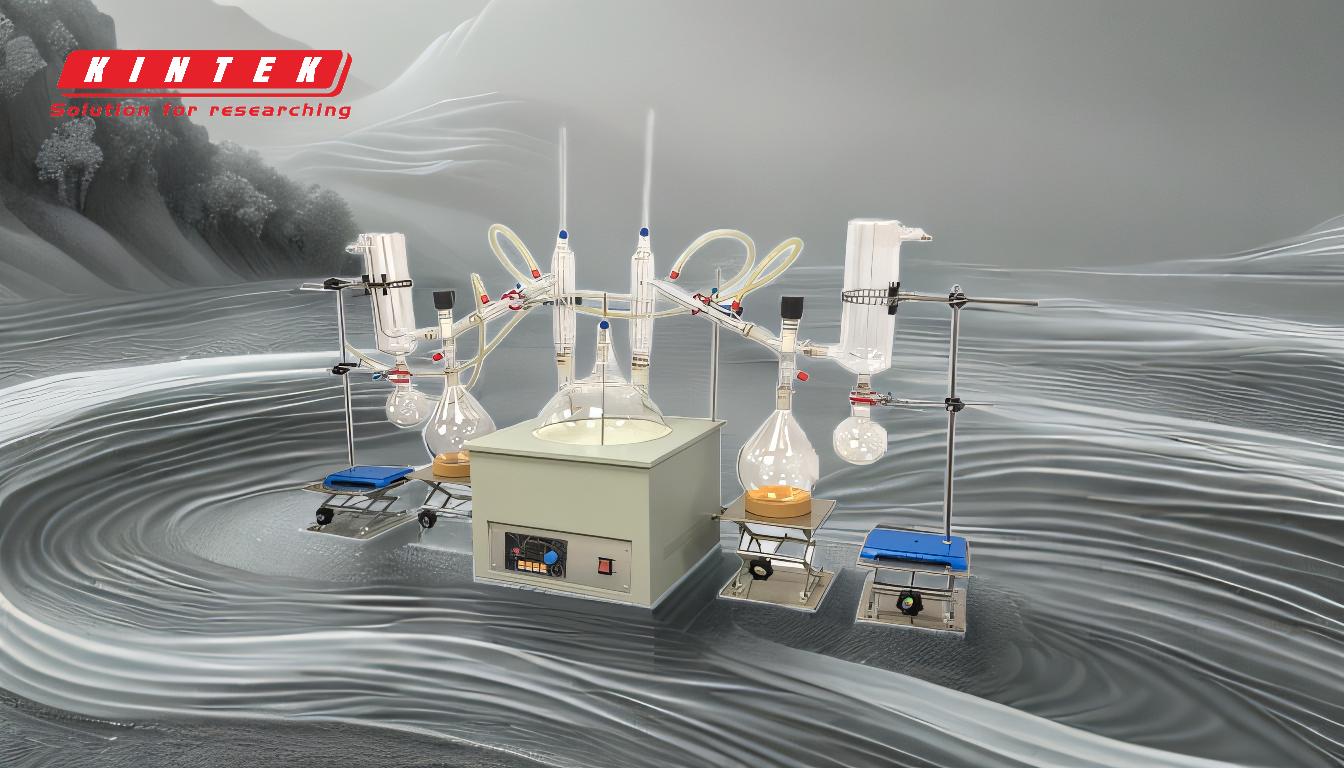Simple distillation and fractional distillation are both techniques used to separate components of a liquid mixture based on their boiling points. However, simple distillation offers several advantages over fractional distillation, particularly in terms of cost, simplicity, and efficiency for certain applications. Simple distillation is ideal when the boiling points of the components in the mixture are significantly different (typically more than 25°C apart). It requires less equipment, is faster, and is more cost-effective for straightforward separations. Fractional distillation, while more effective for separating components with close boiling points, involves more complex equipment, higher costs, and longer processing times. Below, the key advantages of simple distillation over fractional distillation are explained in detail.
Key Points Explained:

-
Ease of Setup and Operation
- Simple distillation requires minimal equipment: a distillation flask, a condenser, and a receiving flask.
- It is straightforward to set up and operate, making it accessible for basic laboratory or industrial applications.
- Fractional distillation, on the other hand, requires a fractionating column with packing material or plates, which increases the complexity of the setup and operation.
-
Cost-Effectiveness
- Simple distillation is less expensive because it uses fewer components and does not require a fractionating column.
- Fractional distillation involves higher initial costs due to the need for specialized columns, such as spinning band columns, and additional maintenance.
-
Faster Processing Time
- Simple distillation is quicker because it does not involve multiple stages of vapor-liquid contact.
- Fractional distillation requires additional time for the vapor to travel through the fractionating column and undergo repeated condensation and evaporation cycles.
-
Efficiency for Wide Boiling Point Differences
- Simple distillation is highly efficient when separating components with boiling points that differ by more than 25°C.
- Fractional distillation, while capable of separating components with close boiling points, is unnecessary and overcomplicated for such straightforward separations.
-
Lower Energy Consumption
- Simple distillation consumes less energy because it does not require maintaining a temperature gradient across a fractionating column.
- Fractional distillation requires precise temperature control and additional energy to ensure effective separation within the column.
-
Reduced Risk of Contamination
- Simple distillation involves fewer components and less surface area, reducing the risk of contamination from residues or impurities in the equipment.
- Fractional distillation, with its complex column and packing material, can trap impurities or residues, which may affect the purity of the final product.
-
Suitability for Small-Scale Applications
- Simple distillation is ideal for small-scale operations, such as in laboratories or small industries, where high purity is not the primary concern.
- Fractional distillation is better suited for large-scale industrial applications, such as petroleum refining or alcohol purification, where high purity is critical.
-
Lower Maintenance Requirements
- Simple distillation systems are easier to clean and maintain due to their simpler design.
- Fractional distillation systems require regular maintenance of the fractionating column, including cleaning or replacing packing materials, which adds to operational costs and downtime.
In summary, simple distillation is advantageous over fractional distillation when the goal is to separate components with significantly different boiling points in a cost-effective, efficient, and straightforward manner. While fractional distillation excels in separating components with close boiling points, its complexity, higher costs, and longer processing times make simple distillation the preferred choice for many applications.
Summary Table:
| Advantage | Simple Distillation | Fractional Distillation |
|---|---|---|
| Ease of Setup and Operation | Minimal equipment: flask, condenser, receiving flask. Easy to set up and operate. | Requires fractionating column with packing material, increasing complexity. |
| Cost-Effectiveness | Less expensive due to fewer components and no fractionating column. | Higher initial costs for specialized columns and maintenance. |
| Faster Processing Time | Quicker as it avoids multiple vapor-liquid contact stages. | Slower due to repeated condensation and evaporation cycles in the column. |
| Efficiency for Wide Boiling Points | Highly efficient for components with >25°C boiling point differences. | Overcomplicated for wide boiling point differences. |
| Lower Energy Consumption | Consumes less energy without a temperature gradient. | Requires precise temperature control and additional energy for the column. |
| Reduced Risk of Contamination | Fewer components and less surface area reduce contamination risks. | Complex column and packing material can trap impurities. |
| Suitability for Small-Scale Applications | Ideal for labs or small industries where high purity is not critical. | Better for large-scale industrial applications requiring high purity. |
| Lower Maintenance Requirements | Easier to clean and maintain due to simpler design. | Requires regular maintenance of the fractionating column, increasing operational costs. |
Looking for the right distillation solution for your needs? Contact our experts today to learn more!










